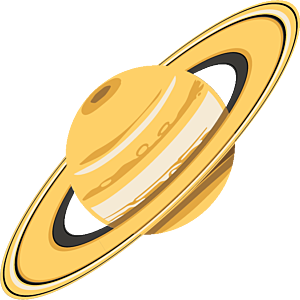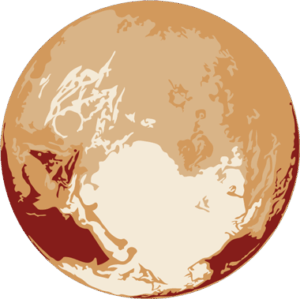The Downlink • Apr 01, 2022
Not a planet? Not a problem.
Space Snapshot

Enhanced color can bring out the beauty and majesty of the cosmos, but sometimes you want to see how it would look to the human eye. This image of Pluto shows you just that. This accurate natural-color image of Pluto was taken by NASA's New Horizons spacecraft when it flew by the dwarf planet in 2015. Image credit: NASA et al.
You love space, now take action
This weekly newsletter is your toolkit to learn more about space, share information with your friends and family and take direct action to support exploration. Anyone can subscribe at planetary.org/connect to receive it as a weekly email.
Mission Briefings


It looks like Pluto might have some enormous ice volcanoes. A new study from NASA’s New Horizon researchers suggests that Pluto experiences large-scale cryovolcanic activity, resulting in unique geological phenomena. Like a good exfoliator, Pluto’s large volcanoes appear to resurface large swaths of land, resulting in a relatively young surface — at least in some spots. That’s one way to get a youthful glow. Pictured: The surface of Pluto shown in greyscale, with an artistic interpretation of how past volcanic processes may have operated superimposed in blue. Image credit: NASA et al.

Hubble has broken its own record for peering deep into space. NASA’s iconic space telescope has detected the light of a star that existed within the first billion years after the big bang. This is the farthest — and therefore oldest — individual star ever seen to date.

ESA wants to find another way to get ExoMars to the Red Planet. Though the mission was recently suspended after Russia’s invasion of Ukraine, ESA now says it will consider other collaborators to assist with its Rosalind Franklin rover. The rover will be stored at a Thales Alenia Space site in Italy as plans are made.
From The Planetary Society


X-ray astronomy allows us to see a whole new side of the cosmos. Martin Weisskopf helped invent this technique more than 50 years ago, and still leads the field as project scientist for the spectacular Chandra X-ray Observatory and principal investigator for the brand new Imaging X-ray Polarimetry Explorer or IXPE. He joins this week’s Planetary Radio to talk about the most energetic and enigmatic objects in the cosmos. Pictured: An X-ray image of supernova remnant Cassiopeia A. Image credit: NASA/CXC/SAO/IXPE.

NASA’s new budget request is out. The Biden Administration proposed $26 billion — an 8% increase over the previous year. Our FY 2023 NASA Budget page covers which programs grow (and which ones don’t) and will track all future congressional action.

You can help make sure NASA gets the funding it needs. Right now we’re raising funds to support our space policy and advocacy program, the arm of The Planetary Society that rallies members and advocates in support of planetary exploration funding. By making a gift today, you will ensure that we can continue to speak up for vital space missions.

Want to dive even deeper into space policy? Our chief advocate and senior space policy adviser Casey Dreier’s academic paper proposing a reconstruction of Apollo's budget history was published in the journal Space Policy. Read it online for free.
What's Up

Although there are still no planets visible in the evening sky, there’s a lot to see in the pre-dawn. Venus, looking super bright, will be close to reddish Mars and yellowish Saturn this week. Learn more at planetary.org/night-sky.
Wow of the Week

Although the natural color image of Pluto inspires awe, this enhanced color photo definitely makes us go “wow!” The image uses data from the New Horizons spacecraft from light within and beyond the visible spectrum, and enhances color differences to make it easier for scientists to study the variations on the dwarf planet’s surface. The result is both useful and spectacular. Image credit: NASA / Johns Hopkins University Applied Physics Laboratory / Southwest Research Institute / ZLDoyle.
Share your artwork with us!
We love to feature space artwork in the Downlink. If you create any kind of space-related art, we invite you to send it to us by replying to any Downlink email or writing to [email protected]. Please let us know in your email if you’re a Planetary Society member!


 Explore Worlds
Explore Worlds Find Life
Find Life Defend Earth
Defend Earth


